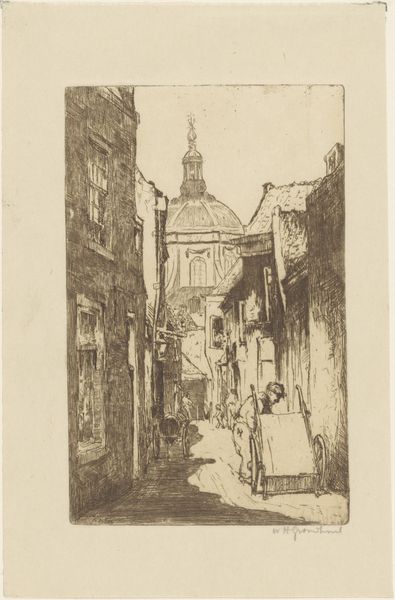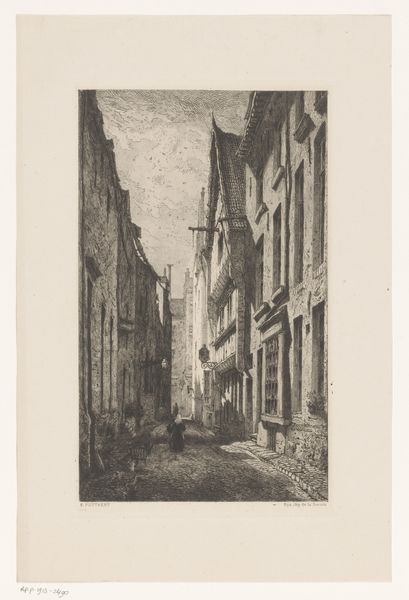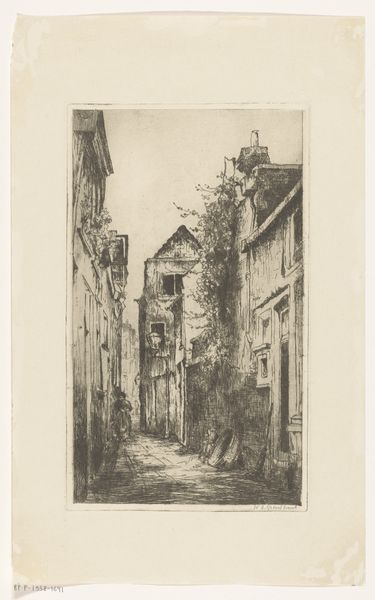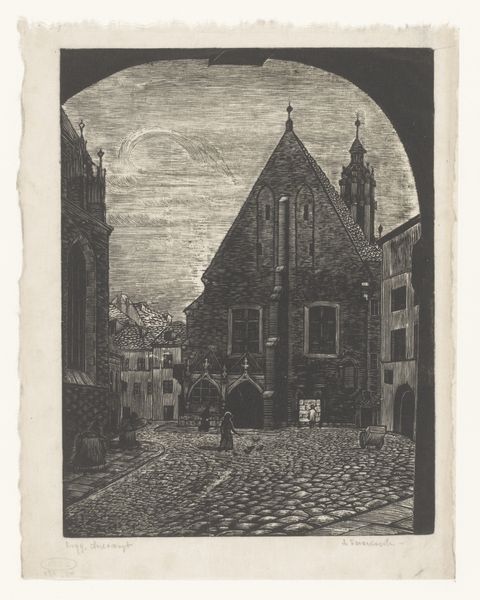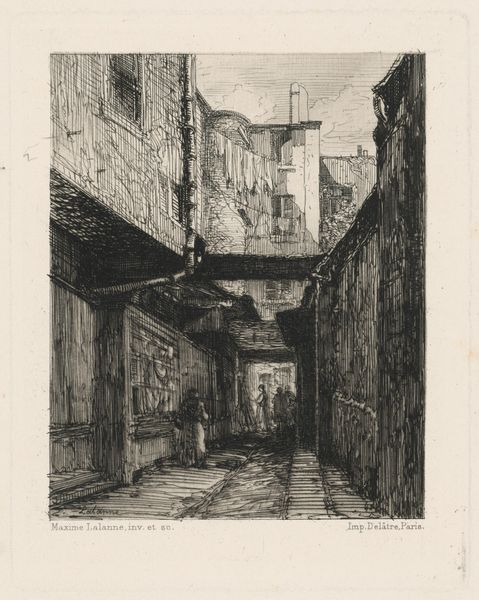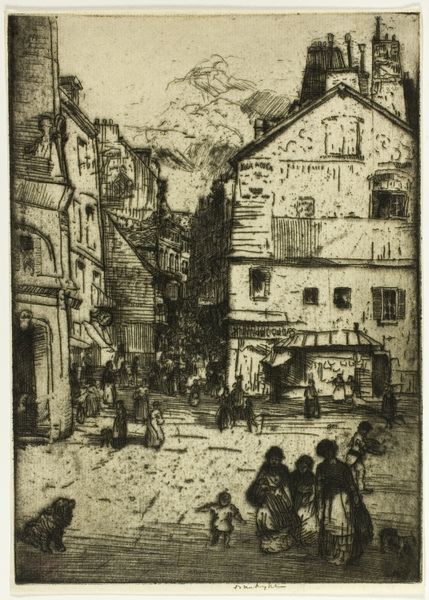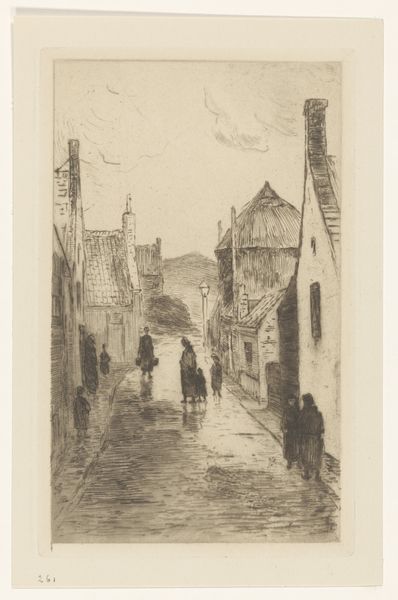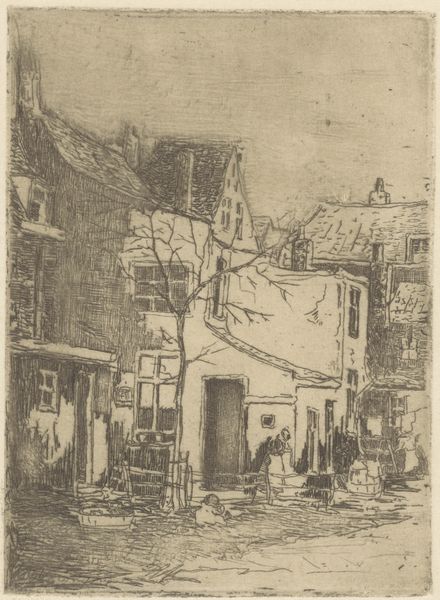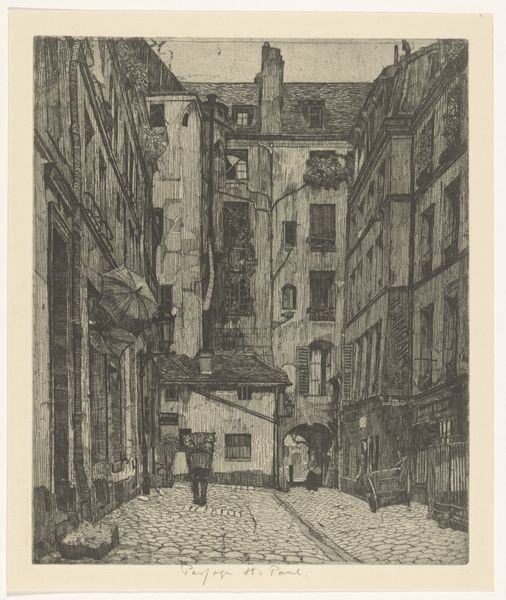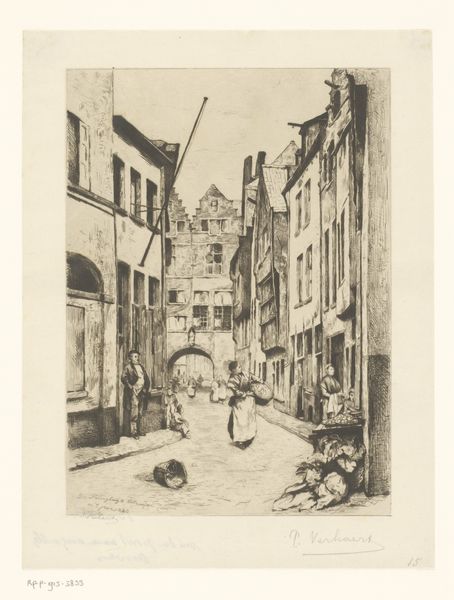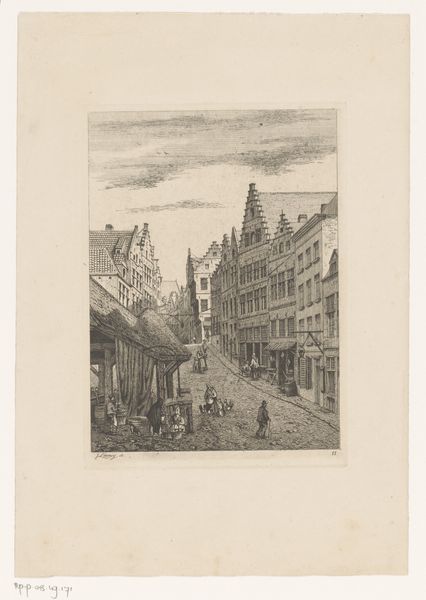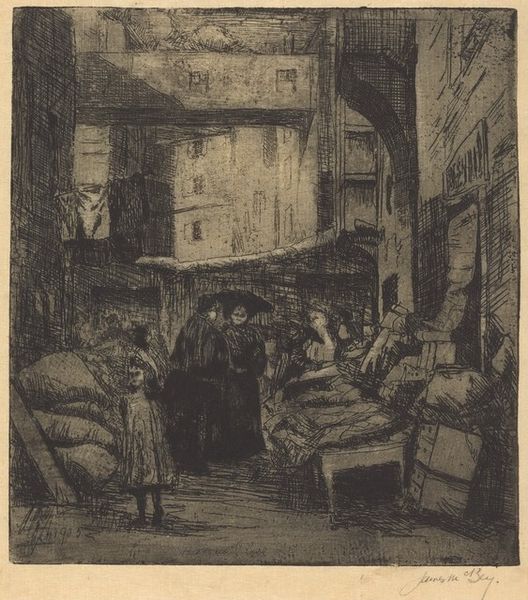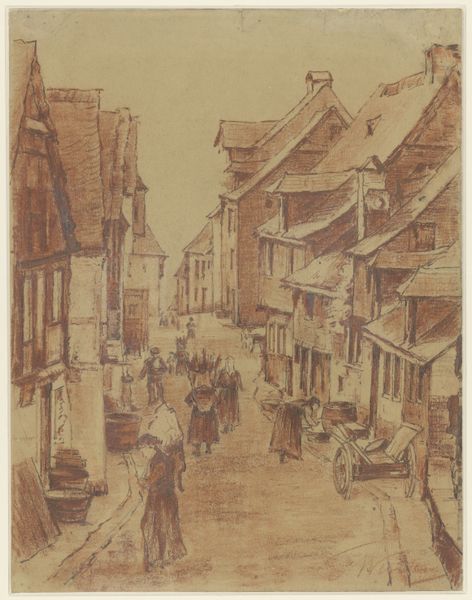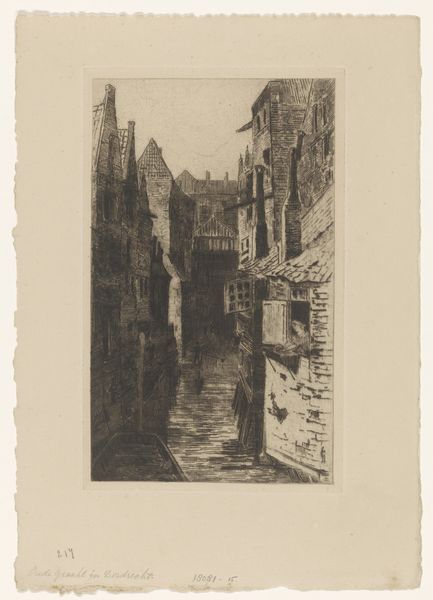
drawing, print, etching
#
portrait
#
drawing
# print
#
impressionism
#
etching
#
landscape
#
figuration
#
19th century
#
cityscape
#
street
#
building
#
monochrome
Dimensions: sheet: 14 7/16 x 10 13/16 in. (36.7 x 27.5 cm) plate: 7 5/8 x 5 3/4 in. (19.3 x 14.6 cm)
Copyright: Public Domain
Curator: I am struck by the dense atmosphere in Pissarro's 1885 etching, "The Street of the Grand Clock, Rouen," held here at the Metropolitan Museum of Art. What's your initial read? Editor: Immediately, it's the dynamism of the composition that grabs me. Despite the monochromatic palette, there’s a real sense of depth, of the busy street receding towards that magnificent clock tower. The hatching is frenetic. Curator: The "Grand Clock," or Gros Horloge, stands as a symbol of civic pride, doesn't it? Pissarro, an anarchist, was known to challenge social norms. How do we read his capturing of such a bourgeois scene through that lens? Editor: The way he uses etching enhances that read, actually. See how the lines aren’t perfectly clean; they’re broken, flickering, suggestive of the impermanence of even grand structures. Semiotically, this unraveling lends itself well to your social challenge idea. Curator: Exactly! Think about the working class, absent from so many formal portraits of the time, yet they are right here within the commercial throes. The faceless crowds become almost a challenge to the formal structures that dictate their lives. Their existence defies such precision. Editor: I also observe his placement of figures and groupings. Some figures are quite dark, almost swallowed by the street, and he uses light and dark—chiaroscuro—to pull others forward, closer to our viewpoint, offering some kind of intimate connection. Curator: And there is even that small dog scurrying on the right, defying social order by aimlessly trotting about as it pleases. The clock towers over it all, suggesting temporal order, but these lively city-dwellers refuse to subscribe fully. Editor: Ultimately, that push and pull gives "The Street of the Grand Clock" its energy. A dialectic between the fixed, measured time, as told by the Clock, versus lived experiences is represented with Pissarro’s clever lines and figure arrangements. It makes this more than a document; it's an active experience. Curator: Yes, I completely concur! Looking at it through the lens of individual experience in the face of social structure really allows for modern readings of everyday scenes of the past. Editor: It underscores how technique, even within constraints, is never politically neutral, even back in 1885.
Comments
No comments
Be the first to comment and join the conversation on the ultimate creative platform.
